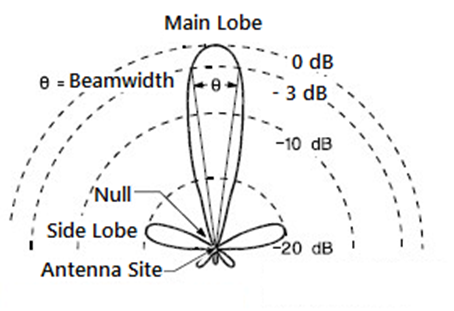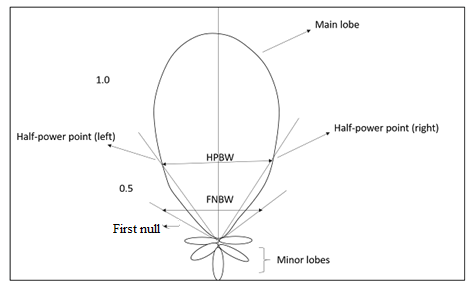What is Antenna Beamwidth?
Antenna beamwidth refers to the angular range of the main lobe in the radiation pattern of an antenna. This main lobe is where the majority of the signal power is emitted. Typically, beamwidth is measured by the angle between two points on either side of the main lobe, known as the half-power points or -3dB points. At these points, the radiated power drops to half of its peak value. The measurement of beamwidth is quantified in degrees and can be taken in either the horizontal or vertical planes.

The antenna’s beamwidth holds significant importance as it dictates both its directionality and coverage area. A narrower beamwidth signifies a highly focused, directional antenna, ideal for long-range communication. In contrast, a wider beamwidth suits short-range communication and broader coverage. Several factors, including antenna type, design, orientation, and radio frequency, influence the beamwidth, making it a versatile parameter in wireless communication design.
Antenna beamwidth is a helpful analytical parameter for a number of practical applications, including:
- To plan antenna coverage in a given area.
- To determine whether neighboring antennas will interfere with each other.
- To assist in improving the performance of communication links.
- Network mobility development.
Exploring Half Power Beam Width (HPBW) and First Null Beam Width (FNBW) in Antenna Radiation Patterns:
Half Power Beam Width (HPBW): This parameter defines the angle between two distinct points on an antenna’s radiation pattern, specifically the half power points or -3 dB points. At these points, the power emitted is reduced to half of its maximum value. A narrower HPBW signifies a more focused, directional antenna with heightened gain. Conversely, a wider HPBW suggests a less focused, less directional antenna with lower gain.

- First Null Beamwidth (FNBW): This metric gauges the angle between the initial null points situated adjacent to the main lobe, where the power registers as zero. For antenna designers, the FNBW holds significant relevance as it delineates the antenna’s capability to repel signals or interference from undesirable directions. A narrower FNBW signifies enhanced proficiency in deflecting unwanted signals, while a broader FNBW suggests a comparatively reduced capacity to counteract signals or interference originating from unwanted directions.
Interplay between Beamwidth and Gain:
Beamwidth and gain share an inverse relationship. Reducing beamwidth, resulting in a narrower focus, leads to heightened gain. This stems from the fact that a narrow beamwidth concentrates power transfer into a specific direction.
Interconnection of Signal-to-Noise Ratio (SNR) and Beamwidth:
As Beamwidth remains closely intertwined with directivity and gain, modifications in beamwidth lead to parallel adjustments in these two factors. With a narrower beamwidth, both gain and directivity are enhanced, subsequently elevating the signal-to-noise ratio (SNR) advantageously. The SNR signifies the balance between signal strength and undesired interference (noise), where a higher SNR is perpetually advantageous.
